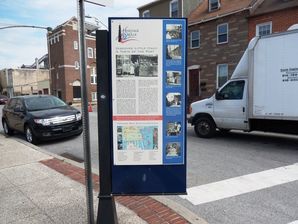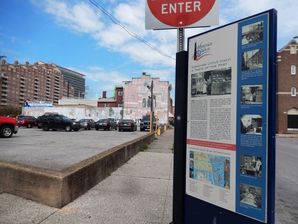Discover Little Italy: A Taste of the Past
Baltimore’s vibrant and diverse neighborhoods evolved to accommodate a constant influx of newcomers searching for opportunity. Between 1830 and 1917, more than two million immigrants landed in Baltimore, which was second only to New York as a port of entry for many years. Most new arrivals promptly boarded the B&O Railroad and headed west, but many stayed to work in the city’s growing industries. Irish, German, East European, Greek, and Italian immigrants added their customs, religions, and cuisines to Baltimore’s colorful tapestry of neighborhoods.
Today, Little Italy is one of Baltimore’s most renowned ethnic neighborhoods, but through most of the 19th century, it contained an integrated mix of immigrants and native Baltimoreans, black and white. After 1881, when the archdiocese constructed St. Leo’s Roman Catholic Church (225 South Exeter Street) specifically for Italian immigrants, the neighborhood became Baltimore’s foremost Italian enclave. Ever since, neighborhood life has centered on St. Leo’s and its many activities: religious services, primary and secondary education, after-school programs, English classes, festivals, and Saturday haircuts. The bocce ball courts in the 900 block of Stiles Street also remain popular.
From the streets of Little Italy, pasta and politicians rose to fame. A multitude of restaurants grew out of small mom-and-pop grocery stores in response to demand from Little Italy’s many boarding houses and the nearby President Street Railroad Station. Nationally prominent politicians got there start her. Vincent L. Palmisano, who lived at 320 South High Street, served as the nation’s first Italian-born U.S. Congressman from 1926 to 1938. Thomas D’Alesandro Jr. served as U.S. Congressman from 1939 to 1947 and as Baltimore’s mayor from 1947 to 1959. His son, Tommy D’Alesandro III, was mayor of Baltimore from 1967 to 1971. D’Alesandro Jr.’s daughter, Nancy D’Alesandro Pelosi (D-CA), became the first female minority leader of the U.S. House of Representatives in 2002.
(Inscription under the images on the right) (1st image)-Immigrant ship docking at Locust Point, Baltimore’s “Ellis Island,” 1904.
(2nd image)-Street scene, circa 1930. In Little Italy and many other Baltimore rowhouse neighborhoods, narrow streets lined with 10 to 12-foot wide houses are tucked between wider streets with larger houses.
(3rd image)-The Schiavo family grocery store on Eastern Avenue, circa 1900.
(4th image)-Local parades and festivals have enlivened Little Italy for more than 100 years. The streets come to life during the Feast of St. Gabriel in August. A June festival honors St Anthony of Padua, who, according to legend, saved Little Italy from the Great Fire of 1904 in answer to residents’ prayers.
(5th image)-Lopresti’s Market, Stiles Street, 1969.
(6th image)-Dinner at the D’Alesandro house (245 Albemarle Street).




